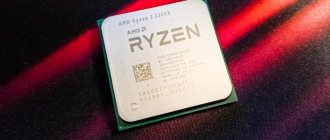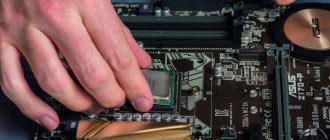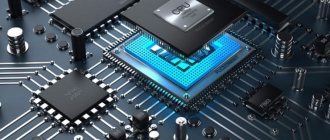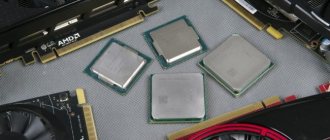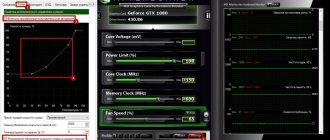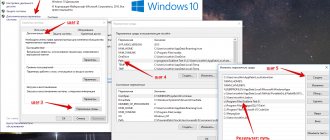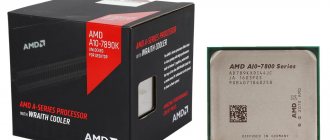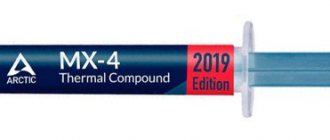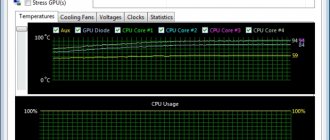Hardware platforms for machine learning are rapidly developing and becoming cheaper.
Nvidia Jetson modules enable you to create efficient and affordable Edge Computing solutions. Today it is possible to fit a high-performance system with 256 Nvidia Cuda graphics cores into a computer that fits in the palm of your hand. In this article we will analyze what Edge Computing is, talk about Nvidia Jetson modules and show the solutions that we were able to develop based on them.
Edge Computing
The Edge Computing concept
involves saving resources by moving computing power as close to the end equipment as possible.
————————————————————————————————————————-
Let's consider one example from a real project: a customer needs to recognize the license plate number of a car approaching a gate at a remote site. A high-resolution digital camera is installed above the gate. The only connection with the object is an expensive mobile Internet channel. Previously, the customer had to process any movement in the video and send frames from the camera to the server for recognition. Most of the transmitted frames contained false alarms: movement of people, animals, weather phenomena. This led to increased consumption of mobile traffic. With the advent of affordable Edge Computing solutions, it has become possible to process the video stream locally at the site, using machine learning to distinguish an approaching car from other phenomena and even recognize its license plate. As a result, sending data to the server over an expensive Internet channel was reduced to only sending a text string with the car number. This allowed us to reduce the cost of mobile traffic significantly.
What is Nvidia Jetson
Nvidia Jetson
— a family of embedded computing modules in the SoM (System On Module) form factor, aimed at creating compact and energy-efficient machine learning systems. Nvidia Jetson modules are compact boards containing on board all the components of a full-fledged computer: processor, video cores, RAM, USB controllers, etc. They are designed for integration into other carrier boards designed for specific tasks.
Using SoM greatly simplifies the development of embedded systems, since the manufacturer of a specific solution only needs to develop a carrier board for the peripherals and insert a ready-made computing module. This allows you to reduce the cost of developing complex motherboards and focus on build quality and additional options. It is also easier for developers since they can use the same SoM as an Evaluation Kit while the final device is not yet ready. As a result, the software developer receives a predictable hardware environment and can be sure that when transferring programs to the final device, he will receive exactly the same performance. This is especially important when developing machine learning systems, when the result is highly dependent on the characteristics of the hardware.
Tegra processors with Volta architecture enjoy broad support from NVIDIA partners
According to the already established tradition, NVIDIA introduced the next generation of Tegra back in January of this year, but it came to the supply of serial processors only in the fall. This allowed the company at the Japanese session of GTC 2020 to once again return to the story of the DRIVE AGX platform, which is based on 12-nm Tegra processors of the Xavier family with Volta architecture. As we've already noted, developers can get their reference kits for $2,499 in select countries, and availability is gradually expanding.
announcements and advertising
2080 Super Gigabyte Gaming OC for 60 rubles.
Compeo.ru - the right comp store without any tricks
RTX 2060 becomes cheaper before the arrival of 3xxx
Ryzen 4000
series included in computers already in Citylink
The price of MSI RTX 2070 has collapsed after the announcement of RTX 3xxx
Core i9 10 series is half the price of the same 9 series
The price of memory has been halved in Regard - more expensive everywhere
Image source: NVIDIA
For automotive control systems, DRIVE AGX can be offered in various configurations, but the illustration for the press release showed an option with two discrete graphics processors and two Terga processors. But the range of such solutions will be quite wide:
Image source: NVIDIA
The company's founder even joked that one day such a processor would live in his head:
Image source: NVIDIA
Xavier processors pack 9 billion transistors into an area of 350 sq. mm, and they are now mass-produced using 12nm technology by TSMC. Japanese manufacturers of robots, trucks, motor boats and compact unmanned aerial vehicles, as well as ground unmanned taxis have already shown interest in the platform. There is a global shortage of truck drivers – research suggests it reaches 50% of demand. Robots will replace humans in this area as well. Isuzu, Volvo and Mercedes-Benz have already started collaborating with NVIDIA.
Interestingly, in the press release, NVIDIA again mentions two next-generation discrete graphics processors, which are used as part of DRIVE AGX. Whether they already belong to the Volta/Turing generation or to an even newer one is difficult to say with certainty, but taking into account the conservatism of the automobile segment, it is wiser to count on the first option.
Image source: NVIDIA
NVIDIA DRIVE AGX Xavier development kits will be available to the company's customers from October 1 of this year. The system with two discrete and two central processors is comparable in size to a shoebox, but much heavier. The latter circumstance even forced the CEO of NVIDIA to joke that when he was hired for this job, he was not warned that it involved such physical exertion.
Jetson Nano
Nvidia Jetson Nano is the junior module of the Jetson line, designed for integration into end devices such as cameras, video recorders, robots, interactive terminals and consumer electronics. Made in the SO-DIMM form factor as RAM boards for laptops.
Characteristics
Processor
: Quad-core ARM Cortex-A57 MPCore @ 1.4 GHz
GPU
: Maxwell with 128 CUDA cores
Hardware video codec:
Encoding [email protected] (H.264/H.265 codec) and decoding [email protected]
Video output:
HDMI 2.0 or DP1 .2 |
eDP 1.4 | DSI (1x2), two simultaneous RAM:
4 GB LPDDR4 64-bit;
25.6 GB/s Flash memory:
16 GB eMMC (for operating system)
Interfaces:
1×1/2/4 PCIE, 1×USB 3.0, 3×USB 2.0, Gigabit Ethernet
I/O:
1×SDIO / 2 ×SPI / 6×I2C / 2×I2S / GPIO pins
Operating systems:
Linux
Dimensions:
69.5×45 mm
Connection
: 260-pin SO-DIMM DDR4 connector
Thanks to the low cost of the Jetson Nano module, many developers have tried it out. Even on Habré there are already several articles about its use for computer vision and pattern recognition: Jetson Nano demo - cat recognition. This is the most accessible and popular module for deploying machine learning systems.
NVIDIA Tegra X1 – even more cores
On the eve of the opening of the annual consumer electronics exhibition Consumer Electronics Show 2020, NVIDIA, during a press conference, showed the world its new single-chip system, which was previously known under the code name Erista , but was eventually called Nvidia Tegra X1 . NVIDIA co-founder and CEO Jen-Hsun Huang said it is the world's first mobile device processor with 1 teraflops , which is comparable in power to the fastest supercomputer of 2000, which he then required. with an energy consumption of 1 million watts.
Let us remember that a year ago Nvidia announced what was at that time a very powerful single-chip platform Tegra K1 . But the chip was delayed in entering the market and ultimately did not gain much popularity, despite its impressive performance. This SoC is configured with four Cortex-A15 processor cores, an additional low-power core, and a GPU with 192 CUDA cores. And only towards the end of 2014, the first Xiaomi MiPad and Nexus 9 tablets with a modified Tegra K1 model appeared on the market. Its configuration includes two Denver processor cores of Nvidia's own design, but no differences in the GPU.
Tegra X1 is equipped with eight 64-bit CPU cores in a 4+4 configuration and a graphics accelerator with 256 stream processors. The CPU is built using big.LITTLE technology in combination with four energy-efficient ARM Cortex-A53 cores and four powerful Cortex-A57 cores. According to NVIDIA, the Tegra X1 has twice the performance of the K1 while maintaining the same power consumption. Unlike previous Tegra chips, the X1 supports 16-bit FP16 floating point data types. This format requires significantly less processing power compared to FP32 in Tegra K1.
It's not entirely clear whether Jensen Huang is comparing the new chip to the 4-core Cortex-A15-based version of the K1 or the 2-core 64-bit version based on the Denver cores, but either way, the X1 looks like a significant step forward. By the way, it is worth noting that NVIDIA decided to use licensed ARM Cortex cores rather than its own Denver. This should speed up the time to market for the new chip and keep up with the latest trends. Note that Qualcomm also opted for standard ARM cores in its latest flagship chip, the Snapdragon 810.
It is worth noting that the Tegra X1 is manufactured in compliance with 20nm standards and is capable of encoding and decoding 4K video at 60 fps in modern H.265 (HEVC) or similar Google VP9 formats. The graphics accelerator supports the following technologies: DirectX 12, OpenGL 4.5, Nvidia CUDA, OpenGL ES 3.1 and Android Extension Pack (AEP).
Nvidia also shared performance indicators of the Tegra X1 in comparison with its predecessor Tegra K1 and Apple A8x, which is used in the company's latest tablet, iPad Air 2:
To demonstrate the full power of Tegra X1, a demo video called “ Elemental ” was launched, created on the Unreal Engine 4, which was first shown in 2012 to demonstrate the new capabilities of high-end PCs and next-generation consoles. Unfortunately, Tegra X1 was not able to make the most of this demo, this was noticeable by the reduced number of effects, and the frame rate often dropped, but all this can be missed if you remember that we are talking about a mobile chip, then, on the contrary, this is a big step forward.
According to the head of the company, Tegra X1 is largely intended for tablets, since smartphones simply will not be able to unleash the full potential of the processor. Also, one of the key points in the mobile segment is energy efficiency. Jen-San Huang noted that only 10 watts were used to run Elemental. For comparison, last year the Xbox One used 100 W for the same operation, and top-end Nvidia accelerators from two years ago required 300 W.
I can’t even believe that such power is hidden in such a tiny thing!
| GPU | 256-core GPU with NVIDIA Maxwell DX-12 architecture, OpenGL 4.4, NVIDIA CUDA®, OpenGL ES 3.1 and AEP |
| CPU | 8 cores, 64-bit ARM® CPU 4 A57 cores with 2 MB L2 cache; 4x A53 cores with 512KB L2 cache |
| VIDEO | 4K video with support for H.265, VP9 codecs and 60 fps frame rate 4k H.265, 4k VP9, 4k H.264 |
| POWER | TSMC 20nm SOC Isolated power rails, fourth generation switching system |
| PLAYBACK POSSIBILITIES | 4K x 2K @ 60 Hz, 1080p @ 120 Hz HDMI 2.0 @ 60 fps, HDCP 2.2 |
Testing NVIDIA Tegra X1 in benchmarks:
- Tumblr
- Seal
Similar
DVR MIC-710IVA based on Nvidia Jetson Nano
We present an all-in-one smart video surveillance solution - the MIC-710IVA 8-channel digital video recorder powered by Nvidia Jetson Nano.
It allows you to integrate machine vision systems without building a complex complex of several devices. MIC-710IVA combines:
- Digital Video Recorder with Storage System
- Compute engine with 128 CUDA cores for real-time video processing
- 8-port PoE switch for connecting cameras directly
- Digital input/output block for controlling relays, reed switches, alarms, etc.
Machine learning has quickly become a trend in video surveillance. It allows you to automate what a person previously had to do, for example, identify abnormal behavior of people, cars, natural phenomena, detect accidents, analyze the workload of objects, etc. You no longer need to rely on the attentiveness of the dispatcher. Such systems are in demand in retail, security complexes, and transport hubs.
Specifications MIC-710IVA
- Built on NVIDIA Jetson Nano
- 8 PoE ports for video cameras
- Possibility of installing two 3.5″ HDDs
- Linux OS
- Low power consumption
- H.264/H.265 video codec support
- RS-485 interface and 8-bit digital inputs/outputs
Rear panel of the MIC-710IVA DVR
The MIC-710IVA DVR allows you to perform primary processing of video data in real time, without the need to broadcast the entire stream to remote data processing centers. This reduces the load on the network and eliminates the need to transfer sensitive data to third parties.
Tegra X1 (Erista) processor with Maxwell graphics turned out to be automotive
Just a few minutes ago, the Internet broadcast from the NVIDIA presentation dedicated to the announcement of new products ended. Since it was not possible to count on a large audience at this early hour, we decided to go through the main points of the presentation after the broadcast had ended, eliminating the loss of time of readers busy with rest, which would inevitably arise when watching certain protracted moments of the broadcast. Let us immediately clarify that the only new products presented by NVIDIA on the eve of the opening of CES 2020 were the Tegra X1 (Erista) processor and products based on it, intended for the automotive segment. No discrete graphics! And even regarding Tegra X1, NVIDIA head Jen-Hsun Huang categorically stated that this processor will not find use in smartphones.
In fact, not much has been said about the Tegra X1 processor itself. It received the letter “X” in its name in honor of the Maxwell generation graphics subsystem, which it has in the form of 256 stream processors. The computing part is represented by eight cores with support for 64-bit extensions. According to the head of the company, it took NVIDIA just a few months to bring Maxwell-class graphics to the Tegra mobile processor segment. In fact, the lag behind the discrete sector in terms of graphics has been minimized since the days of Tegra K1:
announcements and advertising
2080 Super Gigabyte Gaming OC for 60 rubles.
Compeo.ru - the right comp store without any tricks
RTX 2060 becomes cheaper before the arrival of 3xxx
Ryzen 4000
series included in computers already in Citylink
The price of MSI RTX 2070 has collapsed after the announcement of RTX 3xxx
Core i9 10 series is half the price of the same 9 series
The price of memory has been halved in Regard - it’s more expensive everywhere
The processor is capable of playing 10-bit H.265/VP9 video at 4K resolution at 60 frames per second. At the same time, it consumes no more than 10 W. The production technology has not been specified, but we have previously heard that Erista generation processors can be produced using 20 nm technology. By the way, a sample of the processor appeared on the stage today, it was held in the hands of the company’s founder.
Of course, Tegra X1 surpasses its closest competitors both in terms of performance and energy efficiency. NVIDIA even compares the Tegra X1 with an Intel Core i7 processor, which consumes ten times more energy, but is inferior in some situations to the Tegra X1 in terms of performance.
Energy efficiency indicators are significantly improved compared to Tegra K1:
The computing performance of Tegra X1 is characterized by the ability to reach the level of one teraflops. Fifteen years ago, such performance was demonstrated by the most productive supercomputer in the world, and now a mobile processor can do it.
The further narration was devoted to aspects of the use of Tegra X1 in cars. The first of the presented platforms, NVIDIA Drive CX, uses a single Tegra X1 processor to operate the virtual dashboard, navigation and entertainment system. This computer, installed behind the dashboard of a car, can produce graphics with a resolution of almost 17 megapixels. Car manufacturers will be offered the Drive Studio toolkit, which will allow them to create infotainment systems based on any software platform, as well as replace dashboard instruments with virtual analogues.
The navigation map has a three-dimensional structure, and the car itself is softly highlighted on it. You can change the “point of view”, change the scale of the map, and virtual instruments not only change color, but can also imitate various decorative materials in the design of dials: aluminum can give way to carbon fiber, porcelain or bamboo.
Speaking about the evolution of active driver assistance systems, Jensen Huang emphasizes that they are increasingly beginning to rely on data received from cameras. Existing production cars recognize road signs and markings, switch their lights when approaching oncoming or passing cars, and are capable of automatically braking in front of a sudden obstacle. The most advanced models recognize pedestrians and animals appearing on the road, and are able to do this in low light conditions and in fog.
The future of these systems is inextricably linked to image recognition technologies, and this is precisely the area where NVIDIA excels.
The second of the NVIDIA platforms presented today is called Drive PX; it already contains two Tegra X1 processors and 12 camera inputs, information from which can be processed both by on-board processors and in the cloud.
Three cameras can be located on the front panels of the car body or under the windshield, the remaining nine will be distributed on the sides and rear. Video recording in 4K resolution can be done at 30 frames per second.
Neural network experts from Google and Facebook helped NVIDIA create a fast-learning image recognition system. It does not require the introduction of all possible samples of images of objects, and therefore it is trained literally within days and hours, and not several years. For example, the system was able to quickly learn to recognize the Audi A7.
A sample of the image recognition system was “tested” by NVIDIA specialists in a real environment. She learned to recognize pedestrians and cyclists, even those partially hidden behind obstacles. Road signs are recognized at a great distance, and the system distinguishes traffic light signals.
In addition, within a few days the system learned to recognize vehicle types. This can be useful, for example, for giving priority to special services vehicles or public transport.
As the head of NVIDIA explains, if some image was not recognized, the photo is transferred to the “cloud”, where statistics on similar cases are collected. A supercomputer analyzes such images, then they are recognized, and this “refined” data is sent back to the on-board systems of the cars.
It turns out that over time, cars learn to recognize objects better. By the way, the algorithms used by NVIDIA have already made it possible to achieve a pattern recognition accuracy of 93% - this is even better than some people.
A pair of Tegra X1 processors in one Drive PX system is capable of identifying up to 75 objects simultaneously. An Audi representative invited to the stage told how NVIDIA technologies helped the brand, over ten years of cooperation, teach its cars to move without human assistance. One of the prototypes was recently able to lap the race track at speeds of up to 240 km/h in certain sections, beating some of the flesh and blood racers.
NVIDIA also demonstrated the capabilities of the automatic parking system, which it tested in the garage of its own headquarters. Receiving images from four panoramic cameras on the car body, the system recognizes obstacles and can allocate free parking spaces to occupy them. Similarly, the owner can give a command from a smartphone to have the car independently drive out of the parking lot to the office porch.
The generated “cloud of points” is analyzed in real time, the system prevents collisions with obstacles and other cars.
In fact, the company sees two main areas of application for the Tegra X1: creating a “virtual dashboard” using Drive CX and working in automatic piloting systems using Drive PX. None of NVIDIA’s partners have yet announced in which models and when these developments will begin to be used, but one can hope that Volkswagen group cars will be among the first to receive them.
Jetson Tegra X2
Jetson Tegra is an older module in the line, almost three times more productive than Jetson Nano. Made in the form factor of a mezzanine board, that is, it is inserted into another board through a special 400-pin connector. There is also a TX2i version with an extended operating temperature range.
Characteristics
Processor
: Quad-core ARM Cortex-A57 MPCore + Dual-core NVIDIA Denver 2 64-Bit CPU GPU
:
256 NVIDIA Pascal cores + 256 cores NVIDIA CUDA
RAM:
8 or 4 GB LPDDR4 64-bit;
59.7 GB/s Connection
: 400-pin connector
This module is aimed at professional developers and costs four times more than Jetson Nano. The Jetson TX2 module is designed for higher performance computing. Used in robotics, industry, aircraft, etc.
NVIDIA Tegra X1 is the first processor with performance exceeding 1 teraflops
The American company NVIDIA, one of the largest developers of graphics accelerators and processors for them, today, on the eve of the opening of the annual electronics exhibition CES 2015, introduced a new proprietary flagship mobile processor for 2015 - NVIDIA Tegra X1. Let us recall that previously this single-chip system was known on the World Wide Web under the code name “Erista”. NVIDIA CEO Jensen Huang calls the new development Tegra X1 a mobile superchip, the main feature of which is the most powerful graphics with Maxwell architecture (as opposed to the Kepler architecture of Tegra K1).
Telegram channel of the creator of Trashbox about technology
NVIDIA Tegra X1 is the most advanced mobile processor ever created by NVIDIA, as it officially reports. The powerful new NVIDIA Maxwell architecture, 256 GPU cores, 64-bit hardware platform, unrivaled 4K video capabilities, and more energy-efficient performance than its predecessor make the new NVIDIA Tegra X1 mobile chipset ideal for the most complex mobile and automotive applications. applications.
The full technical specifications of the NVIDIA Tegra X1 processor are as follows:
- GPU : 256 cores, NVIDIA Maxwell architecture, DX-12, OpenGL 4.4 NVIDIA CUDA, OpenGL ES 3.1 and AEP
- CPU : 8 cores, 64-bit ARM architecture, four Cortex-A57 cores (2 MB L2 cache), four Cortex-A53 cores (512 KB L2 cache)
- Video : H.265, 4K VP9 60fps, 4K H.265, 4K VP9, 4K H.264
- Power : 20nm SOC - TSMC process, isolated buses, fourth generation Cluster Switching
- Display : 4K x 2K @ 60 Hz, FullHD (1080p) @ 120 Hz, HDMI 2.0 60 fps, HDCP 2.2
The new NVIDIA Tegra X1 mobile processor also supports all major graphics standards, including Unreal Engine 4, DirectX version 12, OpenGL 4.5, CUDA, OpenGL ES 3.1 and Android Extension Pack. Also, one of the main features of NVIDIA’s new single-chip system is that Tegra X1 is the world’s first mobile processor with a maximum performance of over 1 teraflops. 1 Flops is a measure of performance, 1 teraflops is 1 trillion operations per second or 1000 billion operations per second. With such power, the head of NVIDIA firmly stated that the Tegra X1 will not find use in smartphones.
If you believe the results of NVIDIA's internal tests, the Tegra X1 is superior to its closest competitors in both performance and energy efficiency. NVIDIA even compares Tegra X1 with the Intel Core i7 processor, which is ten times more power-hungry, but in some situations it is inferior to the Tegra X1 mobile solution in terms of performance. According to NVIDIA, the computing power of the chipset is intended for the automotive segment. In the near future, Tegra X1 is expected to be used in the new “digital on-board computer” NVIDIA Drive CX. Nothing is known about smartphones yet.
Compact industrial computer MIC-720AI
The MIC-720AI is built on the Jetson TX2 platform with completely passive cooling and is designed for installation in industrial machine vision systems, manufacturing and moving objects. The fanless design ensures complete quiet operation and allows the computer to be used in dusty environments without the need for maintenance.
The presence of a PoE port allows you to connect the Ethernet camera directly to a computer without the need to use injectors and intermediate equipment.
Specifications of MIC-720AI
- Based on Nvidia Tegra X2
- Fully passive cooling
- Two USB 3.0, one USB 2.0 OTG/Host
- Ethernet port supporting 802.3af PoE
- Linux OS
- Wide operating temperature range
On the rear panel of the computer there is a USB 2.0 port with the ability to switch operating modes between OTG and Host. In OTG mode, the computer can be connected as a USB drive to another computer to transfer data and update software.
MIC-720AI is suitable for building production control systems and high-precision video stream analysis.
High performance industrial computer MIC-730AI
The MIC-730AI computer is based on Jetson Xavier and is designed for installation in high-performance production systems that require processing a large amount of data. Just like in the MIC-720AI model, the cooling system is made entirely of passive components and does not use fans. The computer configuration can be expanded by connecting two PCIe x8/x4 cards via the iModule MIC-75M20 expansion module.
Specifications of MIC-730AI
Based on Nvidia Xavier Passive cooling Two USB 3.0, two USB 2.0 2 Ethernet ports Possibility of connecting two PCIe cards (via iModule MIC-75M20 module) Possibility of connecting 1x MiniPCIe and 1x M.2 (PCIex4 NVMe) Two RS-485 serial ports /232 Pre-installed Linux OS Ubuntu 18.04 Low power consumption
